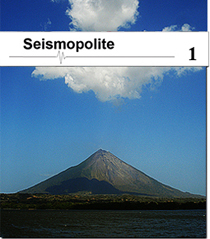..
-
A Loud Silence: An Interview with Tada Hengsapkul on Art and Democracy in Thailand Today
BY ROGER NELSON. In 2017, Tada held two solo exhibitions in Thailand. The first, at Chiang Mai’s Gallery Seescape, was titled The Things That Take Us Apart, and centred on playful and theatrical video images of a group of strangers dancing, often naked, in a moment of hedonistic escape from the increasingly restricted experience of daily life since the 2014 coup d’etat, which reinstated military rule in the officially democratic Southeast Asian nation. -
Art, the uncontainable other in contemporary detention camps.
BY RENATA SUMMO-O'CONNELL. In Australia, refugees’ confinement locations have been pushed beyond the boundaries of the actual mainland, placing refugees in Christmas Island (Australian territory), Manus Island (Papua New Guinea) and Nauru (an independent state in Central Pacific). These Pacific islands have been theatres of an all too real tragedy investing the lives of mainly young families and young individuals who escaped some of the harshest oppressive regimes, from Iran to Myanmar, from Iraq to Kurdish oppressed enclaves, only to end up confined in Australian asylum seekers detention centres. -
(De-)colonizing Don Quixote in its Context: Censorship and Visual Manipulation in Central Spain
BY SANTIAGO G. VILLAJOS. (De)colonising Don Quixote in its Context' was registered as a curatorial project of public mural art at the Reina Sofía Museum, Madrid in June 2013. It was by then the result of a series of processes of public engagement, participation and Street Art exploration through digital social networks that started one year before when the page 'Construir un lugar mejor sin destruir lo que tenemos' ('Construct a place better with no destroying what we have'), was founded in Facebook (2012). -
The Return of the Political and Art Censorship
BY LIDIJA MARINKOV PAVLOVIĆ. The artistic project by a South African interdisciplinary artist Brett Bailey, Exhibit B, was performed from 2010 to 2016 in many European festivals. However, the exhibit was cancelled in London in 2014. Exhibit B is an artistic project which uses multiple explicit and disturbing scenes and installations to show the consequences of racism, with an accent on dehumanizing methods, as well as their continuity which is well present even today, in the treatment of migrants. -
Free Cultural Spaces: Freedom of Expression in Autonomous Geographies
BY TINA CARLISI. Solvognen, which means 'Chariot of the Sun'—a reference to Norse mythology—was an action theatre collective active between 1969 and 1983. Made up of activists against the war in Viet Nam, squatters, hippies and yippies, some members moved to Christiania in the early 1970s. Gradually the troupe became an integrated component of Freetown, where they began their political action theatre. In adopting a co-operative group work model and performing in the streets and other everyday places, the troupe presented an alternative to institutionalized theatre in Denmark at the time. -
Looking Past the Future. An interview with Marguerite Humeau.
BY KAREN VESTERGAARD ANDERSEN. In the installation 'Echoes', Humeau challenges us by means of aesthetically alluring our senses to take in the ghostliness of our time by envisioning the guts and gore of contemporary myths in the making. This way of bridging the past with vital questions of today, and turn it into a harrowing dream-scape of visual and sonic matter, forms Humeau’s imaginative and investigative art practice. -
Dealing with Art Censorship in Turkey: The Case of Kazım Öz’s film Zer
BY HAZAL SIPAHI. Kazım Öz’s first film 'Ax' (1999) was censored and then banned by the Ministry of Culture and Tourism. In 2010, his film 'The Photograph' was removed from the program of the 10th New Horizons International Film Festival in Poland after the intervention of the Ministry of Culture and Tourism of Turkey, who sponsored the event.
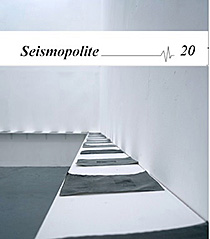
-
Embedded Aesthetics: Artist-in-Residencies as Sites of Discursive Struggle and Social Innovation
BY KAREN WALL & MICHAEL LITHGOW. AiRs exist in hundreds if not thousands of different configurations all over the world, in over 100 countries in every kind of arts discipline and are hosted and organized by many different kinds of organizations.They offer a wide range of opportunities and impose a diverse range of demands and obligations. Our interest in this paper lies in the operation of the AiR as an assemblage of values, expectations, materials, goals, practices and conventions that create, arrange and conduct desire within an institutional setting. -
The Social Life of Artist Residencies: working with people and places not your own - part 2
BY MARNIE BADHAM. While some artists migrated to rural locations through retreats and colonies, others thrived in cities enjoying a bohemian life. Following Lind’s ‘collaborative turn’, artists have organised around both instrumentalised public systems and private markets by forming collectives finding new ways to work together, domestically and politically. -
Art Residencies – In pursuit of origin - part 2
BY SEHR JALIL. Muhammad Zeeshan’s work began to get a worldwide attention after the Gasworks, Charles Wallace residency. That has been a path for many for many emerging Pakistani contemporary artists. In tackling themes such as masculinity, dominance and local and international violence, he injects beauty into what could be a stark repertoire of images. -
Developing urban artist-run residencies (UARRs) in East Jerusalem
BY ZOE BRAY. While the strength of UARRs are that they are devoid of organizational frameworks, that is they are not invited, hosted or developed by any official entity, in areas of conflict, this can pose certain challenges; as a grassroots and independent initiative, a UARR in East Jerusalem can be vulnerable, whereby its intentions can be easily interpreted as potentially inflammatory to opposing sides. -
Paesemuseo: about locality as a specific platform and an abstract object of investigation
BY SUSANNA SCHOENBERG. In 1968 Pinuccio Sciola, sculptor and (becoming) father of Sardinian muralism, started a mobilization process of his community; one year later his village San Sperate was declared to become a museum, anticipating the contemporary discourse on contextual or site-specific art. Noarte Paesemuseo is actually the art (and artists) association in charge of this locality tradition. -
From “Eremitic” artist residency to “Heterotopia”: shifts in the cultural politics of Villa Romana (1905-2017)
BY CARLOTTA CASTELLANI. With its program of talks, symposiums and exhibitions, the artist residency Villa Romana currently promotes a perpetual interaction between cultures and creates cross-cultural links for a mutual understanding through art. In this sense, the house is a unique place in the context of Florence
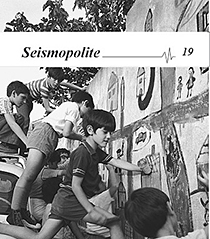
-
Editorial: The art residency in context
At the very moment when residencies become arenas for exchange, the question that immediately arises is of course: Exchange between which identities, what is the status of the objects and knowledge of exchange? Who/ which factors constitute this status; how, and for which/ whose purpose? -
The city: a research and experimentation laboratory
BY BYRON TOLEDO. The residency is configured as an in-situ laboratory in the city that merges the approach to the territory and context with the idea of a local artistic, historical and cultural scene. -
From Washington to Virginia: Chatting About Rural Art Residencies
BY PETER CHRISTENSON & JON HENRY. An interview exchange between artists Jon Henry, founder of Old Furnace Artist Residency (OFAR), a rural residency in Henry’s home in Harrisonburg, VA, and Peter Christenson, catalyst behind the Guest House Cultural Capital Residency (GHCC Res), a unique residency for cultural scholars in a student dormitory of Washington State University in Richland, WA. -
Art Residencies – In pursuit of origin
BY SEHR JALIL. Pakistan is a miracle of geography. Almost and only seven decades in the history of its being, surrounded by India, China, Iran and Afghanistan it is like an ozone layer of paradoxical narratives. Between war, peace, image and imagination it lives with complex realities. We were former India; we were a British colony for over centuries. -
The Social Life of Artist Residencies: working with people and places not your own
BY MARNIE BADHAM. The recent unpredictable explosion of artist residencies has produced a range of social forms over the last century: shifting from what can be described as a more traditional institutional model of patronage with artists laboring on material works in isolated studios - to contemporary forms of social practice projects working collectively or by making art with local communities to explore contemporary global concerns. This shift from the individual to the collaborative and the private to the public in residencies extends the ‘social turn,’ which now permeates the contemporary art world. -
Art in Residency: Precarity or Opportunity?
BY SEBASTJAN LEBAN. If on the one hand we have a symbolic value – in terms of curriculum vitae – that the artist directly gains from a residency and the hope/promise of a possible breakthrough on the International scene, on the other we have an economy that expropriates creativity and produces surplus value. The analyses provided by the paper makes visible the mechanisms of precarisation of artists within the artist residencies programmes. -
A Brazilian perspective on artistic mobility
BY TININHA LLANOS & INES LINKE. Establishing oneself as an option of counteracting the status quo, placing artists face to face to direct forms of engagement and political discussion: How can one work in the context of adversity? Is it possible to create collective practices, experimental works in and with local contexts, while participating in the decentralization of artistic production and the horizontalization of relations between people and places?
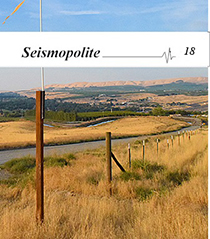
-
Editorial
The potential of artistic intervention in the narrative of place is well illustrated in the articles in this issue. -
‘The Public World is My Studio’: Jeremy Deller’s Public Projects
BY HOLLY ARDEN. In 2009, the English artist Jeremy Deller travelled across the US with the rusted and deformed shell of a car that had been destroyed by a bomb in an Iraqi street. With this wreckage tied on the back of a trailer, Deller stopped at multiple sites along the route to hold conversations with passers-by that were inspired by this unusual cargo—part of a project titled It Is What It Is: Conversations About Iraq. -
The fire and its embers Part 2
BY SYD KROCHMALNY. In the wake of severe economic and social crisis in 2001, Argentina became known as a hotspot of self-managed artistic initiatives, a hunting ground for the world’s curators. Today, this tradition of collaborative artistic activity endures, but with different coordinates reflecting an economy that has doubled in size and a more democratic society in which the contours of social conflict have changed. -
Willem Boshoff's Visual Lists: A Personal Plea for Cultural Preservation
BY ANTONIA DAPENA-TRETTER. The abundance of materials available suggests a possible insecurity on the part of the artist to allow his works to stand alone, but it might also express Boshoff's compulsion to communicate and the urgency of his message. Reading through his portfolio and corresponding artist statements, one becomes acquainted with a man whose love for books and language is equally rivaled by his hatred of dogma or intellectual power plays that cannot be severed from their imperialistic roots. -
Creative Placemaking: How to embed Arts-led processes within cultural regeneration?
BY ANITA MCKEOWN. The initiation of a process of self-organised CP is achieved through the creation of opportunities to reveal and actualise local potential and resources and by encouraging emergent adaptive behaviour and resilient practices from the inside out. -
Reading conflict on the walls of Buenos Aires, part 2
BY GEORGE KAFKA. The debates over the place of both advertisements and graffiti in modern society cover remarkably similar ground. Both provoke considerations of public/private ownership of urban space, the aesthetic qualities of the city and citizen identity.The overlap between these two forms of urban media is particularly evident in two recent examples of Latin American cities’ urban cleanliness policies: ‘cidade limpia’ [clean city] in Sao Paolo and ‘limpiar la ciudad’ [clean the city] in Buenos Aires. -
Isolation, index and faith: Canudos and the invisibility of Sertões
BY MANOEL SILVESTRE FRIQUES. After an interruption of 46 years, the Bahia Biennale of visual arts opened its third edition on May 29, 2014, by asking: Is Everything Northeast? At the most explicit level, the project addressed the limits of official norms and definitions, since Northeast was a term created in 1969 (just one year after the abortion of the second edition of Biennale by the dictatorial government) by the Brazilian Institute of Geography and Statistics (IBGE)
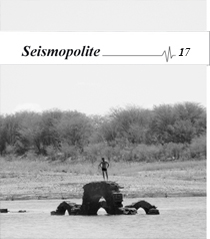
-
Editorial: Forms of resilience
-
Ecologies of resilience: Westminster’s bomb crater garden and the Dig for Victory campaign
BY ADAM PRZYWARA. The bombings, and mobilisation of society faced with war, fast become constituted as the historical symbols of the people’s resilience and government’s resistance. However, beneath this mythologizing discourse, we will find the material traces of specific political actions belonging to the particular describable actors. These material traces shed a light on complex processes which were enacted throughout the time of emergency in Britain. -
Reading Conflict on the Walls of Buenos Aires Part 1
BY GEORGE KAFKA. The twentieth century history of Buenos Aires can be read through its public spaces. Starting in La Boca, ‘El Caminito’, an open air museum, portrays the streets that Italian immigrants inhabited with the wave of immigration in the early decades of the century. A short bus ride up to Avenida 9 de Julio will bring you face to face with Evita’s affectionate smile, gleaming from the very building where she addressed the ‘descamisados’. -
The fire and its embers Part 1
BY SYD KROCHMALNY. In December 2013, over the course of a long day of heated debate, ‘Multiplicity III’, 16 groups of artists active since 2006 reflected on their fluctuating experiences and on the convictions informing their work at the Center for Artistic Research (CIA). This encounter took place a decade after the first ‘Multiplicity’ workshop, which brought together the activists of the new millennium in the now legendary space Tatlín, allowing for the identification of significant developments in this type of collective practice -
The Third World Strikes Back: Neoliberalism and Space Age Relics in the Sculpture of Simón Vega
BY SETH ROBERTS. At once a criticism of the lack of technological advancement of Central America and a statement on the legacy of the Cold War in the region, Tropical Space Proyectos is a powerful reminder of both the real and symbolic divide of modernity in the contemporary world. -
Rediscovering Utopia in Francis Alÿs' "When Faith Moves Mountains - Quando fe mueve montañas " (2002)
BY RIIKA HAAPALAINEN. Utopia translates as a place that is not; a non-place. As Bertolt Brecht defined it, utopia emerges where ”etwas fehlt”, where something is missing. Therefore, utopia is grounded on the notion of lack or absence; it is something that is not-yet, not-here. Utopia as ‘something is missing’ calls for open structures and hospitality for the unknown. In art, this could mean temporary repositioning of the familiar and insignificant. Familiar but insignificant were indeed the sand dunes in the “When Faith Moves Mountains” project. -
Relationally You, Relationally Constructed
BY LORENA MORALES APARICIO. As a purely formal experience, Abstract Expressionism failed to recuperate Western culture during its revolutionary moments of potential in the vulnerable, cathartic moments after World War II. Ligon’s body of work after his experiment with Untitled, 1988 seeks to preserve a singular identity against the historical, insipidly totalitizing pathology of the particular society attempting to reconcile itself with the universal.
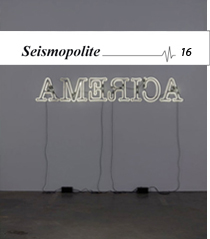
-
Art and Political Ecology (II)
Our second issue in this short series continues exploring the field of art and political ecology, focusing particularly on our journal’s central question of art and its meaningfulness/ agency as a local phenomenon. -
Appealing for an Alternative: Ecology and Environmentalism in Joseph Beuys’ Projects of Social Sculpture
BY CARA JORDAN. The concept of social sculpture, which Beuys developed in the early 1970s, centered on the belief that art could include the entire process of living — thoughts, actions, conversation, and objects — and therefore could be enacted by a wide range of people beyond artists. -
An eco-aesthetic for economization? Non-modern social practices of art and ecology.
BY GIACOMO BAZZANI. Theorists of new economic geography give cities the advise that they should facilitate the participation of artists and creatives from various sectors to encourage economic and urban development. If art and creativity have become a central factor in the economic development, the next, crucial question would be: have they lost all critical possibilities? -
Yuko Hasegawa: New Sensorium – Exiting from the Failures of Modernization
BY MYLENE FERRAND LOINTIER. - Human beings make decisions and balances. Ecology, however, is a question of for what, and for whom? Bacterias and virus are also part of the ecology, we have to start thinking about them as equivalent platforms to ours. Ecology is too much thinking from a human being point of view, from a utilitarian perspective. -
Interview: Hans Ulrich Obrist
BY MYLENE FERRAND LOINTIER. - There is a sort of expansion where the walls of the silos are becoming porous, but where this is not necessarily a question of art or architecture. Alexander Dorner, the famous director of the State Museum of Hanover at the beginning of the 20th century, said that it was necessary to find « ways beyond art ». -
Urban Songlines: (re-) thinking coownership of public space
BY ALLARD VAN HOORN. These Urban Songlines tell the stories of places, the possibility for relating to them through their histories, presents and futures, linked to the symbols of our culture already familiar to us; myths, legends, fairytales, scientific inventions, popular belief and poetry. The buildings, bridges and squares are translated into music to give voice to our architecture, unlocking the potential to see our daily environment in different ways by listening to spaces as opposed to seeing or inhabiting. -
Eco-Specificity: Performing the Heterogeneous Centre of The Ecological Imperative
BY SOZITA GOUDOUNA. Sites of performance, of exhibition or display are revealed to be culturally specific situations that generate particular contexts, ethics and narratives regarding art, art history and society. Community involvement and the social division between the notions of the public and the private, is strongly associated to the ethos that is generated during the performance of site and eco-specific art projects. -
Allora and Calzadilla’s tangible ecologies
BY LOUISE MALCOLM. While eco-political art is usually directly related to activism or specific ecological problems, another – less direct but more sensory – artistic approach brings abstract concepts such as ecology, climate change or nature, closer to human experience. Some of the most effective artists working in this sensory realm are the duo Jennifer Allora and Guillermo Calzadilla, whose artworks reignite our connection with the Earth and in doing so make ecology palpable. -
KEPONE. A Performance Triptych against Soil Poisoning
BY STEPHANIE MELYON-REINETTE. Chlordécone was classified as endocrine disruptor as early as in 1979 by the World Health Organization (Boughriet, 2012). The first identification of high Chlordecone rates happened at the border customs in Le Havre (France), where a sweet patato shipment actually was refused entry to Metropolitan territory. Thus, the struggle against Chlordecone started in Metropolitan France and was not initiated in the impacted territories straight away.
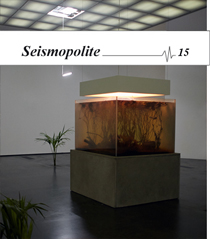
-
Art and political ecology (I)
Which potentials can be found in art, for influencing global discourses on climate change and effecting real change? -
Wild plants. Activism and autonomy in contemporary art.
Contrary to the traditional, ontological understanding of art as something other than reality, that is merely an imitating, symbolic or referential way of relating to reality, the new type of practice is so closely tied to reality that the difference is barely identifiable. -
Interview: Bruno Latour on the show Reset Modernity! at the ZKM
Bruno Latour talks about the origins of his ongoing exhibition Reset Modernity! at the ZKM in Karlsruhe. -
Reset Modernity! By Bruno Latour at the ZKM
The ZKM in Karlsruhe, Germany, has proposed several interesting reflections on the questions posed by the climate change, political ecology and its relation to art. Take, for instance, the invitation made to anthropologist, philosopher and sociologist Bruno Latour, who has been working on these questions for years, and who has conceived the exhibition Reset Modernity! with Martin Guinard-Terrin, Christophe Leclercq and Donato Ricci. -
Toxic Sublime and the Dilemma of the Documentary
For photographers interested in capturing the effects of environmental degradation, there is a fine line between documenting and aestheticizing the human impact on our planet. Over the last two decades, a group of photographers has emerged who document, through large-scale, aerial photographs, mining and oil industries, waste, pollution, and the aftermath of nuclear and environmental disasters. -
Contemporary Art at the Tipping Point – Environmentally Engaged Art at (and after) the COP21 Conference on Climate Change
Following the populous people’s climate marches in New York and around the world in 2014, the United Nations Conference on Climate Change in Paris (COP21), a little over a year later in 2015, was broadly understood as a tipping point by activist and civil society groups, an opinion that was picked up by a large proportion of the media. -
Will Wilson and Jetsonorama: Confronting Resource Extraction in the Navajo Nation
Two men stare into the photographer’s lens, locking eyes with the viewer. They stand back to back, both turning their faces toward us in three quarter profile. Both wear white collared shirts, with beaded necklaces visible around their necks. Both men have a caked yellow substance dripping down their faces, past their bloodshot eyes. -
Seeds of Resistance. Critical Approaches to the Corporatization of Soil, Seeds, and Stone Fruit.
Rather than simply pointing out and becrying the negative effects of the corporatization of soil, seeds, and stone fruit, Claire Pentecost, Dornith Doherty and Sam Van Aken imagine and develop new ways of relating to agriculture while caring for the planet.
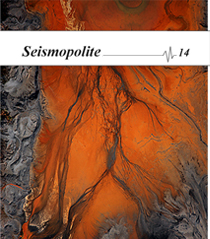
-
Editorial: The Politics of Southeast Asian Contemporary Art
As indicated by the expression «the politics of» in the title, and as demonstrated by the articles in this issue, Southeast Asian contemporary art is neither a politically neutral, nor a geographically exact concept. -
Re-evaluating (art-) historical ties: The politics of showing Southeast Asian art and culture in Singapore (1963-2013)
However late in coming, the Singapore Art Museum (SAM) nonetheless became the first facility anywhere in Southeast Asia to collect and exhibit Southeast Asian modern and contemporary art. In fact, no other country in the region but Singapore, it seems, has expended as much effort if not resources in the consecration of a “Southeast Asian art” together with one’s own. -
The Aesthetics of Identities and the Difficulties of Histories: The Contemporary Chinese Southeast Asian Art
The existence and subjectivity of Chinese Southeast Asian art are an invaluable reference not only to the political complexity and difficulty that haunted post-war Southeast Asian nation-states, but also to the cultural manipulation in the cold-war strategies and the construction of ethnic identities. These are critical links for understanding the modern history of Southeast Asia. -
So we may understand one another. A Travelogue
Southeast Asia’s history of cosmopolitanism, richly intermingling cultural and religious practices, social systems, hybrid artistic styles and languages, all evidence a global and inclusive outlook. -
Art and Social Engagement in Yogyakarta, Indonesia: Ketjilbergerak and the Legacy of Taring Padi
In order to help the people of Sidoarjo commemorate the fourth anniversary of this disaster, Taring Padi, a political art collective from Yogyakarta, Central Java joined the people of Sidoarjo for a four-day collaborative project. Known as “Reflection in the Mud,” this project focused on reviving the collective memory of the Sidoarjo community. -
A Country in Transition: The Role of Art and Artists in Contemporary Myanmar
The history of contemporary art in Myanmar is a history of resistance that has not yet been written. It is a private and intimate resistance, which could not explicitly come to light in public. -
Just Enough Critique: the 8th Asia Pacific Triennial of Contemporary Art
The bodies populating the space of the Triennial reflect less their socio-economic context than a desire to escape reality in search for a fantasy world of monsters, knights, drag queens, goddesses and other mythical or highly idealized figures. -
Hospitality, Friendship, and an Emancipatory Politics
In a wider discussion about cosmopolitanism, hospitality and friendship are important concepts because they point to a specific type of encounter and relationship between people. Analyzing the format of artist-residency in terms of hospitality and friendship is particularly pertinent today especially when signs of cultural intolerance are evident in worldwide public opinions and attitudes.

-
Editorial: Art and Social Responsibility
So, why use a conference to discuss the topic of Art and social responsibility? Earlier this year Christy Wampole questioned the role of conferences and their efficacy in addressing the current state of research and academia, in general. This conference takes art as its point of departure for entering the current debates surrounding the future of the term ‘social responsibility’. The papers presented demonstrate the belief that conferences like this one, still remain spaces in which we can dissect and answer questions related to the social commitment of academia. -
The People’s Choice – Floating Dialogues. How artists create publics through conversation formats
The People’s Choice (Arroz con Mango) and Floating Dialogues show us how social responsibility is less a concrete outcome, a measurable improvement of a certain social issue, than an improvement in the sense that it realizes Hannah Arendt’s notion of the political public as speaking and acting together. -
Spaces of Collaboration: An Interview with Ken Vandermark
Ken Vandermark is one of the few musicians who works seamlessly across musical genres and approaches, managing shifting full out post-punk improvising, to challenging forms of jazz composition that led Mark Corroto to compare him to Duke Ellington. Vandermark plays in his own ensembles (such as the Vandermark 5, DKV Trio, and the Resonance Ensemble), as well as collaborative projects such as Lean Left (with drummer Paal Nilssen-Love and members of the Dutch punk band the Ex) and Peter Brötzmann Tentet. -
Social responsibility and art in public places, gardens and walking trails.
Forms of social responsibility, although not a prerequisite to the artwork, can be constructed directly or indirectly through art’s public interactions; by highlighting, hinting or pointing at ideas pertaining to social responsibility, perhaps where none seemed to exist before the artwork’s construction. -
What good are the arts? Social responsibility and contemporary art
Brain scientists research if and how the arts make us become better and more complex human beings. They aim to prove scientifically that art plays an important part in us becoming better individuals that are able to build a better society. In his research, Brain Prize winner Tamás Freund, for instance, proves by researching large pace-maker cells of the brain how artistic and creative experience enhances the complexity of our inner world, and therefore enables complex, respectful and inclusive decision-making at other areas of our lives in general. -
Reconsidering the Responsibility of an Artist in the Postcolonial Buddhist Society of Sri Lanka
Jagath Weerasinghe is the senior of this artist generation in Sri Lanka, not only with respect to age and reverence, but also considering his role as a catalyst for the development of the new artist generation in the 90s. After studying in the USA he came back to his country in 1992 taking a new perspective on his surroundings. The main motivation for him has been his personal experience as an individual confronted by a complex social, political and economic environment. -
“Each bubble is a body.” Teresa Margolles
Violence and the dead human body are major topics in the sociopolitical art of Teresa Margolles. Born in the 60s in Culiacán, Mexico, she unfalteringly deals with the social and political injustices in her home country. It is hardly surprising that her art shocks visitors, even more so, because the viewer is faced by the reality of death in a disturbingly unmediated fashion.
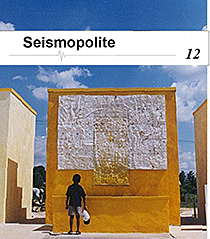
-
The politics of art and art scenes in Latin America (II)
The mnemonic and democratic function of art in public spaces is one of the themes in this second issue on art and politics in Latin America. -
Caring, Curiosity and Curating, Beyond the End
The interlacing of these words –curious, care, cure- is perhaps the best way to describe the research and residency program Ensayos that takes place in Tierra del Fuego, Chile, since 2011 -
The choreography of history and belonging in Tamara Cubas’ works
The questions posed by Cubas and others interested in deconstructing colonial power regard the fact that all too often, the self-imagination of the colonized tends to reproduce the colonial gaze. -
Affective Constructions: Notes on Housing and Art
Self-built houses are a flux, a never-ending state of construction and destruction, caught in a loop of incompleteness, hanging from the threads of necessity, possibility, and imagination. -
Chicano Art, Imagery of Social Movements and José Guadalupe Posada
The Taller de Grafica Popular (Mexico City); the ASARO (Asambleadelos Artistas Revolucionarios de Oaxaca, Mexico), Consejo Grafico, The Royal Chicano Airforce (both United States); and collectively the Chicano Art movement (United States) are but a few examples of how Posada's role has inspired artists and artist collectives dedicated to producing art to effect social change. -
The uses of art in project Comboio, Favela Moinho, 31st Bienal de São Paulo
Comboio defines itself as a project (in action) of research and urban intervention, which since 2010 operates in 'informal spaces' in the center of São Paulo, seeking ways to exercise and assert the right to the city. -
The Evocation of Memory through Street Art in Guatemala and Argentina
In Guatemala, civil war raged for thirty-six years, finally coming to an end in 1996. In Argentina, the military junta enforced extreme measures of repression between 1976 and 1983. In both countries today, there is division over how these violent pasts should be remembered and how its victims should be memorialized. -
Poetics and Aesthetics in Zapatismo. The Farewell of Subcomandante Marcos
The figure of “Marcos the Revolutionary leader” mystifies the reality of the Zapatista movement (in terms of race, class, and structure), but it also tends to assign the Zapatista rebel to a specific place in the world of images. The farewell of Marcos can be seen as a subversion of this dynamics. It constitutes a sort of aesthetic depuration, which moves the attention to the bases and the process of construction of a real egalitarian power from below.
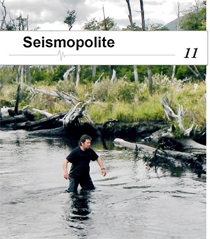
-
The politics of art and art scenes in Latin America (I)
The first of two issues that will discuss the political function of art in diverse, past and contemporary contexts in Latin America. -
Some Thoughts on Art in Mexico from the 1990s and 2000s
In the past decade or so, an alliance between the state, corporations, private initiatives and art market was consolidated in Mexican cultural production. -
Culture under surveillance: the plays that annoyed the dictatorial Uruguayan regime "Libertad, Libertad" and "La Reja"
The independent theatrical actions and events in Uruguay took place over periods of political violence, suffering the repression and persecution by the government of Jorge Pacheco Areco. Also during the dictatorial regime, the independent theater movement had a fundamental role to play -
Politics of Collectivity: Muralism and Public Space in the Practices of the Brigada Ramona Parra during the Unidad Popular
During the rise of the Chilean Left in the 60s, important public art organizations emerged that revolutionized strategies for political propaganda. Created in 1968 at the 6th Congress of the Communist Youth of Chile (JJ.CC), the Brigada Ramona Parra (BRP) was arguably the most remarkable of these organizations -
Pablo Larraín’s No and the Aesthetics of Television
Pablo Larraín’s No (2012) is a Janus-faced film, documentation and interpretation. The movie reconstructs the events surrounding the 1988 Chilean referendum through the perspective of the fictional René Saavedra, an advertising executive hired to run a television campaign to end General Augusto Pinochet’s rule. -
Notes on occupation and a hypothesis to be developed by practice
How to create a link between processes in art and processes in life without aestheticizing life as form” or without allowing the occupation of life to reach its peak? -
Art, Body and Politics in the 80s: Disobedient Aesthetics in the Underground Scene of Buenos Aires
The citizenship and social life atomism created by the Argentinian dictatorship were faced with the challenging values of collective production and creation of the celebrations held during the 80s. -
Shooting a Movie/Cleaning a Tunnel: Jonathas de Andrade and Alexandre Orion’s interventions in Recife and São Paulo, Brazil
The projects by de Andrade and Orion demonstrate an awareness of the flaws in the political and cultural system and make productive use of them -
Notes about art and police in Córdoba, Argentina
The relations between art and police are not that noticeable until they are almost too noticeable. The same could be said about the way other social practices (for example sports, gastronomy or mechanics) are linked to the police
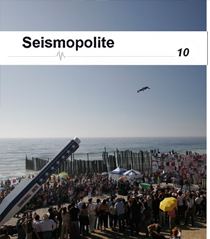
-
### New Year's Supplement:
Seismopolite takes the change of calendar as an opportunity to present a small selection of texts, which demonstrate actuality in somewhat different respects as well as in their combination. -
Killing Pots. The Community Museum of the Xico Valley, Mexico, and a project by Jorge Satorre
The distinction between functional objects and dysfunctional ones constitutes a dialectical point of tension, employed by Satorre but also constantly enacted by the Community Museum, on the one hand preserving the object, but also registering the memory of its non-scientific use, and implying a spiritual or talismanic power that remains intact in all the passages of hands and material states. -
At the Turn of the Centuries: Art and Politics in Sri Lanka
The paintings of the new generation of artists had distinct colours, were expressive in style with a mostly fragmented composition. At the same time they focused on the statement and the communicated message of the painting, which often combined the political and the personal level. -
Music, Politics and the Imagination: Béla Bartók’s Concerto for Orchestra
What allows us to regard Bartók’s Concerto for Orchestra as political? There are indeed elements in the work, the appearance of themes, patterns of rhythm, elements of formal structure that serve as evidence. There are statements attributed to Bartók that articulate a political critique. The question that remains is that of the warrant. -
Music for the New Year
Béla Bartók’s Concerto for Orchestra with commentary by Howard Meltzer.
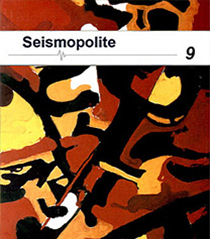
-
Editorial: (Re-)emerging territories of expression
As variously situated as these cases are, they all have in common the presentation of territories of expression which (re-)emerge – from forgetfulness, from calculated oppression, from a set of historical and/ or natural coincidences, or a combination of all of these. -
Project Morrinho: fighting the grand narrative of the favela
In current discourse, the word favela connotes social problems, segregation and urban violence. A historical reading, however, reveals that the favela has been a topic of debate for at least a century, concurrent with a chain of images and representations that diverge from the social constructions that politicians, writers and social scientists have built up over the years -
An emerging audience-sphere in South Asia
Local contemporary artworks are undoubtedly promising and are also seen in the international contemporary art scene. However, what happens is that the art at home fails to create a local audience for itself. -
Political graffiti & art interventions’ transformative function in the urban landscapes of Sofia
During the past few years grafitti has served as a mechanism for revival and return of “forgotten” issues back into the mainstream public discourse in Bulgaria, and as a powerful antidote to the mainstream public and private mass media's “selective blindness” due its opaque ownership structure, concentration and constant deterioration of media pluralism and freedom. -
Contestative art from Southeast Asia
Co-opting the public, enticing them to confront questions of citizenship, to consider individual responsibilities and their consequences for the collective, is one of the tactics that were extensively explored in three recent landmark exhibitions on Southeast Asian contemporary art. -
Suspending Freedom: Image Politics and propaganda in Egypt
In order to control a nation that had already toppled two presidents in the course of three years and to firmly establish his position as Egypt’s one true leader, President Abdel Fatah El-Sisi approached governance with a classic authoritarian approach: establish a condition of fear, silence opposition voices and disseminate favorable images of the regime and its institutions. -
Reclaiming Indigenous voices and staging eco-activism in northern Indigenous theatre
Indigenous eco-theatre synthesizes contemporary indigenous concerns for climate change (which is already dramatically affecting Indigenous economies, lifestyles, and self-governance) with concerns for the emancipation of indigenous peoples
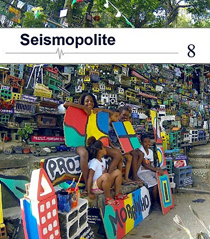
-
Editorial
Accross their various angles and points of departure, the articles in this issue of Seismopolite deal with freedom of expression and how diffent artistic forms and strategies can be used to advance freedom of expression and confront censorship. -
Wanda Raimundi Ortiz and Ivan Monforte in conversation with Rocío Aranda-Alvarado
In some cases, the will to restrict freedom of expression comes from unexpected places, including the community from which the artist originates. Struggles with identity for both artists are born from a problem of finding a place within the metanarratives of art history and within contemporary practice as embraced by mainstream institutions. -
Censorship and conspiracy theory in China
I first visited China in 1997 when Westerners were few and far between and I had to stay in the designated hotels where soldiers and communist party representatives could keep a careful eye on me. I would never have predicted that I would be invited to return some twelve years later in 2009 to do an artistic residency on the theme of Chinese conspiracy theories but that is exactly what happened. -
Eye-snipers. The iconoclastic practice of Tahrir
Egypt’s revolution of 2011 brought forth one of the most powerful icons of civil dissent in recent times: Tahrir Square occupied by masses of protestors seen from a bird’s eye view. The 2014 image of Tahrir might signify a mode of iconoclasm in which the visuality of the broken icon is intact while its ideological content is subverted. -
The politics of contemporary art censorship in modern Greece
The declaration that in a democracy, artistic creation should enjoy complete freedom may be considered given. However, when several artistic practices are prohibited in liberal countries like Greece, one cannot be categorical as to whether freedom of artistic ideas is a prerequisite. Two recent cases of censorship exemplify the Greek skeptical mindset regarding the contemporary subversive artistic production. -
Theatre and peace building in Africa
As the African continent continues to tackle the challenges posed by war, ethno-religious, political and social conflicts, theatre and particularly street theatre is a tool of inestimable value in mediation. The Al-mashish’s engagement in the conflicts in Darfur has proven that theatre can indeed provide the much sought panacea to a society polarised by ethno-religious and political crises. -
Photography and propaganda in Yugoslavia after WW2
Immediately after the end of the WW2, the Communist Party of Yugoslavia set up an “agitation and propaganda apparatus”. While the name “apparatus”, taken from the rhetoric of industrial society and its belief in technical progress, was inappropriate to the actual circumstances in Yugoslavia, it was glorified in avantgarde art circles. -
Violence and Light - Richard Mosse
Congo is caught in a relentless, cyclical procession of violence and counter-violence caused by centuries of systemic, subjective and divine violence. Violence, in Mosse’s case, is the light of revelation. The prospect of witnessing, however mediated, conflict and war is what drew him there.
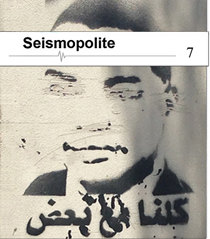
-
Editorial: The future of the biennial - experimental places to reinvent political space?
One may perhaps perceive a certain hope in the fact that the contemporary art map can never be 100% deterritorialized, both in spite and because of its binding to neoliberal geography. -
The Athens Biennale: A Reflection Towards the Future.
The last two editions of the Athens Biennale created a site of agonism, a site of negation, a site of experimentation. To its possible detriment, the fact that it has not become an institution is also its strong point. -
Turning the tide: the oppositional past and uncertain future of the contemporary biennial
The idea of the contemporary biennial as a viable space for real-life political activism requires a great deal of imagination from visitors of large-scale recurring exhibitions around the globe -
Learning from Bucharest. Rethinking ‘white spots’ of art production in Central and Southeastern Europe
The Bucharest Biennale epitomizes the intricate dynamics of art practice and art reception characteristic of the complex cultural texture of Central and Southeastern European as a whole, raising the question whether it might be time to venture beyond the traditional 'road maps' delineated by national boundaries and outdated modes of perception. -
Elsewhere in time
With a focus on grassroots engagement, a decentralized public art biennial entitled Elsewhere intends to engage with homegrown models of public art, that are geared towards catalysing dialogue locally in urban spheres across varied contexts. -
A focus once in a while on plans and projects that are at times not known
On the same basis as Kassel, why couldn’t there be a show, like a biennale or a triennale, of works by artists that deals with the specific problem of making the world a world with peace and harmony… -
The Uto-pianist
Utopia does not have to be defined as an unattainable imaginary non-place but it can be thought of as a way of facilitating an unforeseen event. It is like a piano waiting for a pianist. -
Connecting (Metaphorical) Spaces. A Thought Experiment on Spatial Theory and the Role of Biennials as Power-Political Relays
‘Why (still) biennial?’ is the question posed recurrently at symposiums, conferences, talks, panels and gatherings. To find a path towards a more fruitful answer, one should perhaps rather pose the question: 'Why do biennials function the way they do?' -
Augmented Biennale: The Impact of Digital Technology on the Art and Politics of the Venice Biennale
While the virtual realm offers a site for potential resistance, as seen in the activities of Manifest.AR, it can also reaffirm the institutional power structures already in place, as is the case with Christie’s app. Both the digital mappings presented by Christie's and Manifest.AR complement physical place. -
Dialogue: Jeanine Griffin and Jan Verwoert
'Even before the issue of the inclusion and exclusion of the local in an exhibition comes to figure on the level of representation, the collective subject of the local may in fact always already be included and implicated, present and represented in the show through its performance in the role of the collective host.' -
Future objects/ Object futures
Following OOO (Object Oriented Ontology), an apple, a person, a corporation, a theory, and a dream may all be considered autonomous objects ontologically equal to each other. -
Re-union / living landscape
During this stay in La Réunion, I was allowed to provide a space for research where I could engage in a more direct dialogue with people of a district of the city of Port, which was appropriated by immigrants and low-income people. In my work I proposed visuals-cartographies that re-contextualized and imagined new geographies both of territory and space.
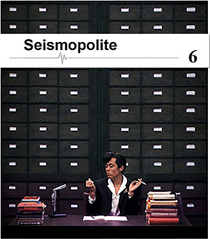
-
Editorial: The Politics of African Contemporary Art
How can African art retain a political agency once it has become part of the global contemporary? -
Of needs and blessings
When Billie Holliday wrote God Bless the Child, I do not think she could have imagined it becoming an anthem for the disenfranchised. Being in control of means matters greatly when considering representation and self-actualisation. -
I'll have a project
Why promote contemporary African art as contemporary African art? Doing so means to have a project, and the constant elements which characterize contemporary African art deeply relate to the essence of projects. -
Dada Masilo – Yinka Shonibare: Upending the Classics.
Both Yinka Shonibare and Dada Masilo commit themselves to erasing the dichotomous relationships that underlie the history of arts and cultures as these tend to be conceptualised in the West. -
Umbrellas and Sewing Machines
Whether as a scaffold on which the wrongs of the past might be brought to account or as a temporary shelter housing the Neverland imaginings of valuable dreams that suddenly go missing, the exhibition as a common locus has become more and then less, and then more, a matter of concern in post-apartheid discussion. -
Discovering William Kentridge
Understanding politically engaged contemporary African art from a distance and how it may raise awareness about personal politics of location -
IN/ FLUX
How to develop innovative ways of supporting, exhibiting, reading, writing, seeing and spreading the word about the creative diversity of a continent and its diasporas? Three women have come together in an undertaking that seeks to address these and related questions through the curatorial platforms of SPARCK and LOWAVE. -
How to conjugate?
Taking contemporary African arts practice as my point of departure, I suggest the mythology of Drexciya as a tunnel for research to understand ways of deciphering philosophical concepts of self, encounter, nation and transformation.
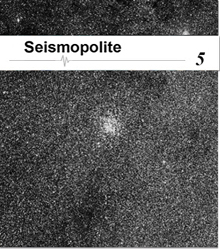
-
Editorial: Freedom of Expression, Performativity and Civil Disobedience
It seems to be a rather difficult endeavor to reconcile art and life, also for the proponents of freedom of expression. Is art suitable as a kind of civil disobedience? -
The Imprisoned Images
Susana de Sousa Dias’s award-winning documentary ‘48’ uncovers the violence and brutality exercised by the Political Police (PIDE) over men and women during the forty-eight years of the Portuguese Dictatorship (1926-1974). More than a movie, she creates an act of rescue centred on history and the image. -
Fresh Start: Transnational and Cultural Movements of Identity in Auf der Anderen Seite
In Fatih Akin's films, social and cinematic discourses related to accented and diasporic cinema combine to deconstruct nationalist myths and provide a wider context for the representation of culturally different Turkish-German identities. -
Art as Civil Disobedience
An artwork is a setting for sharing concerns; insofar as it revises collective experience via individual intention, it is always already an act of civil disobedience. -
A Moving Image That Can Remember Its Past Lives
The performances of the Phitakon in Isaan, Thailand, reappropriate photography and cinema by integrating the camera in traditional rituals that center on the enigmatic propensities of the Tool. They not only seem to relativize the globalized, western forms of vision with which these media have been rigidly associated, but directly challenge media history and specificity -
Passages to Palestine: Performing Peace in a High Conflict Space
My mission was to transmit Dr. Martin Luther King’s message of peace and nonviolence through a multilingual, multimedia theatrical production and to disseminate these ideas in a land that desperately needed them. Such a mission seemed laughable after I had been there on the ground long enough to witness the severity of the situation.
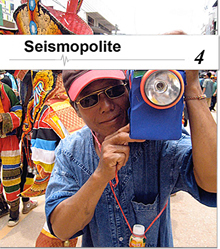
-
Editorial: Reimagining the political geography of “place” and “space”
The distinction between “place” and “space” is fundamental not only to much art, but also to our global situation within neoliberal political geography -
Lebanon in the Armenian Imaginary: So Close with a Distance
About the works of artists of Armenian descent who were born in Lebanon but left for the US or Canada at different junctures as a result of the protracted civil war. -
Beyond the Reference: Continuity, Memory and Territory in Cartographic Art
The problem with much carto-symbolic, map-centered cartographic artistic practice is that it inadvertently privileges the representation of political delineations of place over those of the cultural, mental, experiential, and temporal -
Digital AuthentiCity
The rapid development of ubiquitous computing has triggered an ever-growing demand for digital displays in contemporary urban environments -
The past persists in the present in the form of a dream (participatory architectures, archive and revolution)
In the context of Portugal, a late-arrival to the eurozone and today declared one of its dysfunctional peripheral members, can the photographic image still provide a critical tool for an ‘archaeology of the recent past’? -
Revisiting ‘Reserves’ in Neoliberal India: Case Study of Jarawa Tribes
At the cross-roads of globalization and neoliberalism, India’s social reality marred by instances of exploitation of its unique indigenous heritage creates a farce of tall claims to social equality and justice -
The Ecopoetics of Space in Snyder, Merwin, and Sze
This essay investigates how boundaried conceptions of space in works of ecopoets often undermine their attempts to reframe the relationships of humans to the natural world -
The Politics of 'Just Painting': Engagement and Encounter in the Art of the East Kimberley
Australia's indigenous artists show us what it means to be contemporary, and how to comprehend a world of accelerating multiplicity.
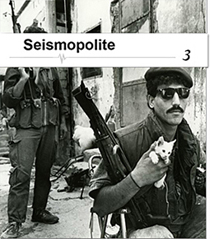
-
Editorial
This issue of Seismopolite Journal brings texts about art and politics from a number of localities worldwide. -
Only light and memory: the permeable cinema of Apichatpong Weerasethakul
Through a local framing May Adadol Ingawanij and David Teh shed a rare light on the many tensions that are channelled, yet somehow balanced, in the films of the Palme d'Or-winning director -
Details on contemporary fascism
The exhibition Details at Bergen Kunsthall focuses on the political potential in art as an archaeology of the politics of perception: it specifically inquires about everyday repositories of contemporary fascism. -
Fear of Speaking
Curator June Yap discusses the conditions for freedom of speech in Singapore under the so-called 'new normal' after the parliamentary and presidential elections, with reference to a recent theatre play entitled Fear of Writing. -
Interview with Övgü Gökçe, Project Coordinator of Diyarbakır Arts Center
The Diyarbakır Arts Center (DSM) is the Diyarbakır branch of Anadolu Kültür, an organization which helps discovering the local cultural and artistic potentials of cities all over Anatolia, and works to form bridges between diverse cities in Turkey and to international cities and art scenes. -
On the Fallacies of “Useful Art”: Tania Bruguera’s Immigrant Movement International
Chris Mansour discusses the implications of performance artist Tania Bruguera's concept of Arte Útil, which she opposes to an idea of aesthetic autonomy. -
The political matrix: The 12th Istanbul Biennial
This year’s Istanbul Biennial deconstructs the idea of the art space architecturally, and simultaneously reclaims it as a pure function of the visitors’ bodily and intellectual possibilities of navigation.
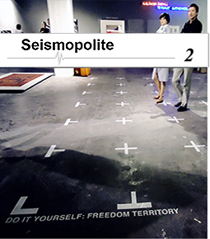
-
Welcome
The first issue of Seismopolite! The Journal's main agenda is to investigate the possibility of artists and art scenes worldwide to reflect and influence their local political situation (...) -
Blind Dates in the Fault Lines of an Empire
A collaborative project, involving artists and researchers from estranged societies in the former territories of the Ottoman Empire, tackles the master narratives, remains and gaps produced by the empire's fall in an attempt to create new future trajectories. -
Between Utopia and Dystopia
In an exhibition at the Museo Universitario de Arte Contemporáneo, Mexico City, Asian artists mediate between art, life, politics, history and social memory in their respective localities and historical contexts. -
The Performative Archive
A review of Fluxus East and The Creative Act - two shows in which archives erupt and thereby reassert Henie Onstad Art Center as a transitory arena for groundbreaking art, upholding the search for a way in which art can maintain its political agency, over time. -
One day it will have to be over
An exhibition series at Museo de Arte Contemporãnea in São Paulo covers the period of military dictatorship in Brazil, displaying how art became one of the few and most efficient tools of opposition to the regime over three decades. -
Interview With Map Office
Josef Ng interviews MAP Office, Valérie Portefaix and Laurent Gutierrez in Hong Kong -
I can't go on, I'll go on
This essay addresses the present conditions of art as a means of social and historical betterment, by responding to the 'Questionnaire on 'The Contemporary'' in e-flux and October.
